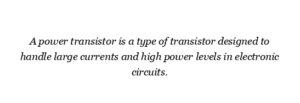In a rectifier circuit, capacitors play a crucial role in smoothing out the pulsating DC output produced by the rectification process. A capacitor in a rectifier circuit is typically placed across the load resistor or the output terminals of the rectifier. During the half-wave rectification process, where only one half of the AC waveform is converted to DC, the output voltage rises and falls rapidly, resulting in a significant ripple. The capacitor is used to reduce this ripple by charging up to the peak voltage of the rectified waveform during each cycle and then discharging gradually as the voltage drops, thereby smoothing the output voltage.
Specifically, in a half-wave rectifier, a capacitor is often used across the load resistor to filter out the AC components and stabilize the DC output voltage. As the rectifier converts AC to pulsating DC, the capacitor charges during the positive half-cycle of the input AC waveform. During the negative half-cycle, when the input voltage is below the capacitor’s charged voltage, the capacitor discharges into the load resistor, smoothing the output voltage. This action reduces the ripple amplitude, resulting in a more stable DC voltage suitable for powering electronic devices or systems.
A capacitor works in a rectifier circuit by storing electrical charge when connected across the rectified DC output. As the rectifier produces pulsating DC, the capacitor charges up during the peaks of the rectified waveform and discharges during the dips or gaps between peaks. This charging and discharging action smooths out the variations in the DC voltage, reducing ripple and providing a more constant voltage level to the load. Capacitors act as energy storage devices in this context, helping to maintain a steady DC output despite the inherent fluctuations of rectified AC.
Increasing the capacitor value in a rectifier circuit generally results in a greater reduction of ripple voltage. A larger capacitor can store more charge, which allows it to smooth out the rectified waveform more effectively. As a result, the output DC voltage becomes more stable with less variation or ripple. However, excessively large capacitors can lead to longer charging and discharging times, potentially affecting the response time of the power supply and causing issues with voltage regulation or transient response. Therefore, capacitor value selection in rectifier circuits involves balancing ripple reduction with practical considerations of circuit performance and efficiency.
Capacitors play a crucial role in reducing ripple in rectifier circuits by smoothing out the variations in the rectified DC output voltage. They are typically placed at the output of the rectifier, across the load resistor or load terminals. By connecting capacitors in parallel with the load, they absorb and discharge electrical energy to minimize the fluctuations caused by rectification. The placement of capacitors directly across the load ensures that the smoothed DC voltage is delivered to the load with reduced ripple, improving the performance and stability of electronic devices powered by rectified DC sources.

